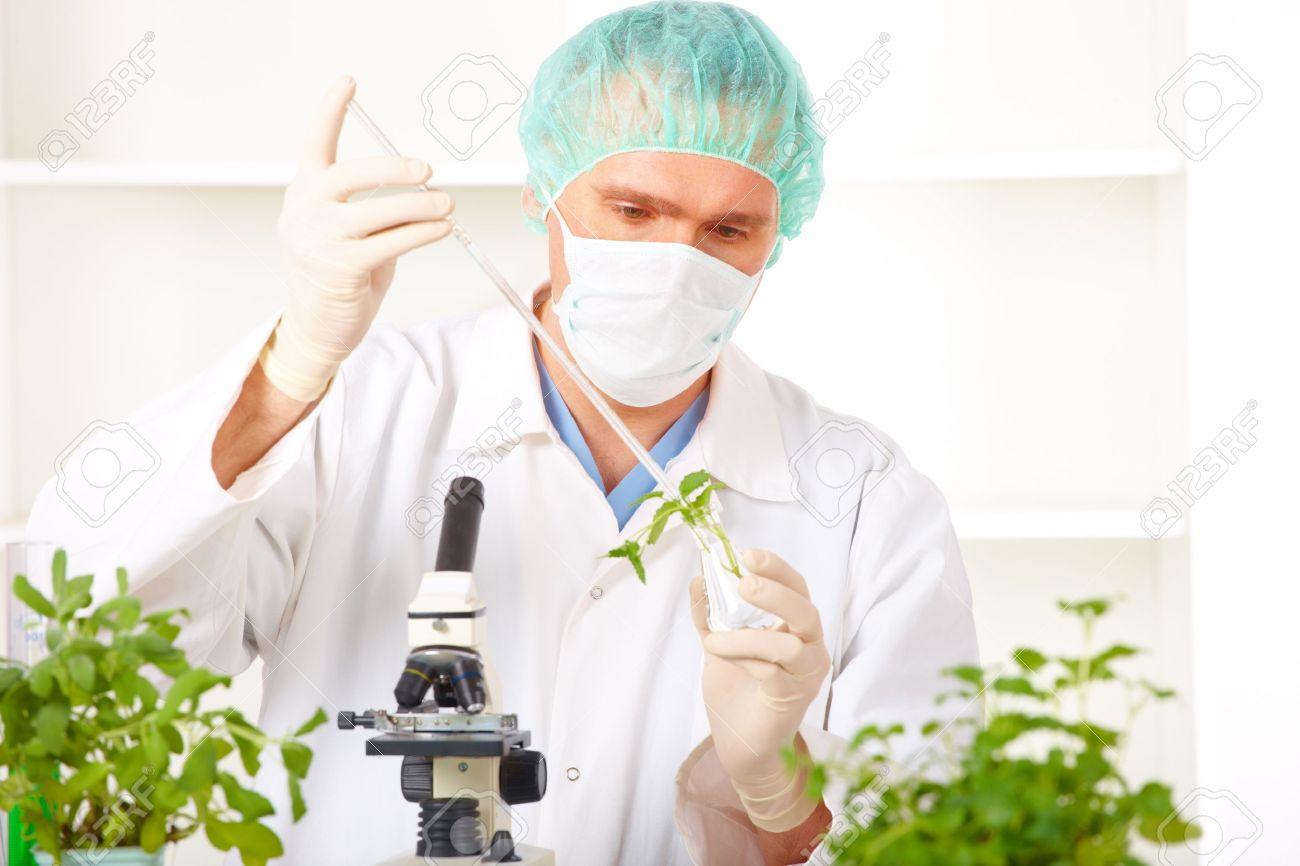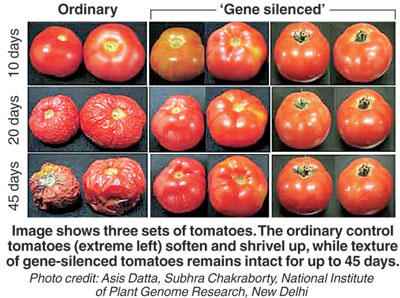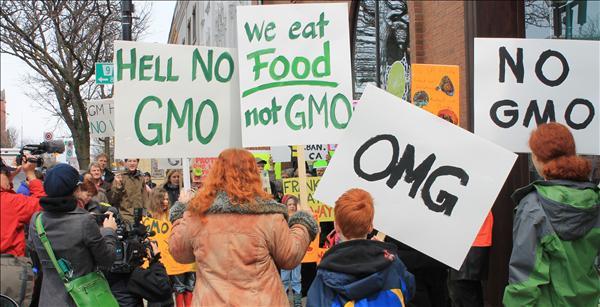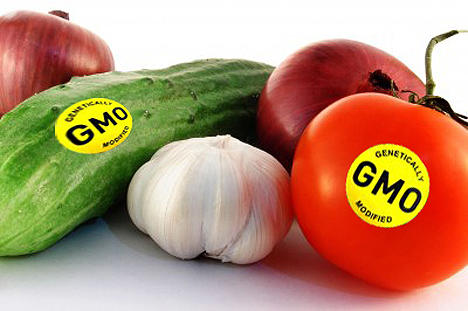Introduction
Food is one of the most important resources and humans need it to survive. Over the millenniums, human civilizations have endeavored to improve their food security. Over the last century, science has been used to improve agricultural practices and therefore increase food production. An important technological advancement that has been applied to agriculture is genetic engineering.
Through this technology, the genetic makeup of food crops can be changed by scientists. The end product is a crop that has some desirable attributes. Genetically modified (GM) foods have proliferated in the global food supply over the course of the past two decades. GM foods have only been in commercial production for about 25 years. For this reason, a lot of uncertainties surround these products. The effect of GM foods on humans and the environment is not yet fully understood. These uncertainties have made the topic very controversial in many countries all over the world. This paper will set out to shed light on the topic of genetically modified foods by explaining what they are, their issues, and their benefits.
What Are Genetically Modified Foods
By definition, genetically modified foods are simply food products that have had their genetic material deliberately modified using the agricultural biotechnology. This biotechnology refers to those processes whereby “foreign genes are transferred to micro-organism, plants or animals, or where the expression of existing genes is permanently modified, using the techniques of genetic engineering” (Ghisleri 236).
The genetic modification process has been going on naturally for centuries. Uzogara documents that farmers engaged in the practice of modifying the genetic makeup of crops and animals since historical times (179). This process was accomplished through selective breeding of animals and the cross-fertilization of different species of plants. By doing this, a farmer could come up with animals and crops that had superior traits to the parent crops or animals.
Natural genetic modification required many years to produce a superior product. In addition to this, the ability of the farmers to alter the genetic material was limited since they could only cross plant species that were closely related. Modern genetic modification overcomes these problems by making it possible to modify unrelated crops. In addition to this, modern GM is a precise technique unlike the traditional animal breeding and plant cross fertilization methods that relied on trial and error.

The modern genetic modification of foods can trace its beginnings to 1953, when the structure of the DNA was discovered. Following this discovery, scientists carried out numerous studies to discover which genes conferred which qualities in crops and how these genes could either be altered or transferred to different organisms. The first commercial GM food, the Flavr Savr tomato was produced and sold to consumers in the US in 1994.
Following the success of the Flavr Savr tomato, many other GM foods were developed, approved by the government, and produced on a large scale for human consumption. Since this first appearance of the genetically modified tomato, numerous other GM foods have been produced and introduced into the country’s food supply chain. Hemphill and Syagnik document that up to 80% of the proceeded foods consumed by Americans contain plants that have been genetically engineered (7).
Issues with GM Foods
A number of important issues surround genetically modified foods. These concerns have led to the lack of widespread acceptance of these products by a segment of the population. There are concerns that genetic manipulation of crops and animals might lead to the unpredictable altering of the nutritional value of foods. Genetic modification involves the altering of the natural genes or the introduction of foreign genes in the crop or animals in order to create a product with desirable traits. This gene manipulation is likely to create a difference in the nutritional content of the traditional product and the GM product.
There is little information on the nutritional quality of GM foods since scientists are yet to carry out conclusive studies on the nutritional content of the many GM products. Knowledge of the nutritional value of different foods is necessary to ensure that the population enjoys the balanced diet required for promoting physical health. Hemphill and Syagnik note that the ambiguity over the nutritional quality of GM foods has necessitated the enactment of laws that require infant formula or baby food that is produced from GMOs be labeled as “produced with generic engineering” (9). The unpredictable manner in which genetic engineering is changing the nutritional value of foods is seen as a major issue.
Another issue is the risk of introducing new allergens into the food supply. Scientific studies show that there is a probability that allergens might be transferred into a crop when it is genetically modified with a foreign gene. Uzogara explains that the recipient plant or animal is likely to acquire allergenic properties present in the donor plant or animals (185). In addition to these, the GM process leads to the introduction of microorganisms whose allergenic properties are unknown into conventional food crops.
The GM food can therefore lead to allergic reactions or make existing ones more severe due to the new gene combination. There are concerns that consumers who are allergic to products such as peanuts and milk might develop allergic reactions after unwittingly consuming GM foods that have been combined with genes from such products.
There are concerns that GM foods might contain hazardous substances that can have adverse health effects to consumers. Some plants contain toxins in their natural genes. However, these natural plant toxins exist in moderate levels and in some cases, the plant has the capacity to naturally pump out the hazardous substances. Genetic modification can lead to the increase in the toxic levels or affect the ability of the plant to pump out the toxins. Ghisleri admits that the genetic engineering process can increase the levels of the hazardous substances in conventional foods (237). The level of naturally produced toxins such as cyanogens in cassavas and pressor amines in bananas can be significantly elevated through genetic modification. The elevated level of toxins in GM products can lead to damaging health effects in the body of consumers.
Another pressing concern is that GM foods might lead to increased antibiotic resistance in humans who consume the products. During the trangene construction phase, scientists “use antibiotic resistance marker genes to facilitate the selection of cells that have been transformed with the gene of interest” (Ghisleri 242). These genes containing antibiotic resistance are then transferred to the recipient crop. Consumption of these crops might have some negative consequences.
According to Ghisleri, the transfer of antibiotic resistance marker genes from the ingested GM food to gut microbes can lead to the development of antibiotic resistance in humans (242). This exacerbates the antibiotic resistance problem that is already evident in a large segment of the population. As such, consumption of GM foods contributes to public health problems by creating antibiotic resistance in consumers of the crops containing the antibiotic resistance marker genes.
Finally, GM foods have led to a number of environmental concerns. These products have been blamed for environmental degradation since the GMOs have unintended consequences when they interact with other organisms in the field. GM foods are created to resist pests and diseases. However, due to cross-pollination, the crops lead to the emergence of super-weeds that require high volumes of agrochemicals to deal with. High usage of agrochemicals damages the environment and the beneficial microorganisms living in the soil (Ghisleri 239). In addition to this, GM foods have been blamed for killing beneficial insects that are poisoned by the toxins contained in the crops. The toxins are put into the crops to kill harmful pests, but they end up also poisoning useful insects such as bees and butterflies.
Benefits of GM Foods
In spite of the significant issues facing GM foods, these products have a number of important benefits. Arguably the most significant benefit of genetic modification is that it increases the crop and animal yield. As the global population has increased over the decades, so has the demand for food. However, the increased population has led to the increase in competition for land and water resources between humans and agricultural activities. Due to the limited land and water resources, agriculture has not been able to expand at the rate required to feed the burgeoning population. GM foods present a solution to this increased food demand by making it possible for farmers to increase the yield of their crops and animals. Scientists have enhanced the production of products such as milk and eggs through genetic engineering (Ghisleri 236).
They have also used growth hormones to increase the growth rate of farm animals, making it possible to obtain meat after short periods. In addition to this, GM foods are able to grow faster than conventional crops, which makes it possible for farmers to get higher harvests per hector. This boosts food availability without necessitating the increase in land or water resources. GM foods therefore make it possible for the current agricultural resources to satisfy the increased global food demands.
Another benefit of GM foods is that they are able to thrive in stressful environmental conditions. Conventional foods require ideal environmental conditions to survive. They are only able to survive within a certain climate range and the soil has to have certain properties. Extreme soil or climate conditions make it impossible for farming activities to be engaged in. GM foods are also engineered to tolerate harsh environmental conditions.
These crops can therefore grow and thrive in arid regions where conventional crops could not survive. Through genetic engineering, scientists are able to create GM foods that can survive in extreme conditions. Such crops are able to withstand factors such as extreme heat, salinity, and pests (Uzogara 194). By creating crops that are able to withstand harsh environmental conditions, scientists make it possible for farmers to carry out their agricultural activities in places that are unsuitable for conventional crop production. This effectively removes the restrictions that conventional crops impose on farmers. GM foods have therefore increased food production by increasing the land that can be used for cultivation.
Another major advantage of GM foods is that they can be tailored to have improved nutritional quality which leads to increased health benefits for the consumer. As stated, modern genetic engineering is a precise science and scientists can tailor products to add nutritional content. Uzogara reveals that the mineral level in food can be increased using genetic engineering (191). The technology can be used to increase meat production in pigs while reducing the fat content which leads to the production of healthier foods.
In addition to this, the health of the population can also be improved by infusing essential nutrients such as vitamins, iron and iodine into staple foods that naturally only contain only single. Uzogara documents that scientists have been able to incorporate extra nutrients in staple foods such as corn and rice, which naturally only provide carbohydrates (191). By modifying such foods with essential nutrients, scientists assist in the fight against nutritional deficiency endemics especially in the developing world.
GM foods have a longer shelf-lives than their conventional counterparts, leading to less wastage and higher availability of some perishable foods. Most fruits and vegetables have a short shelf-life and this leads to some significant problems for producers and consumers. Producers suffer from losses when the product goes bad before it has been sold. Consumers suffer from increased expenses since the producers will sell the products at a higher price to cover the losses suffered through spoilage. In addition to this, consumers are unable to buy the product in bulk since it spoils after a short time. Through genetic engineering, scientists can improve the shelf-life of some food products.
The first commercially available GM food, the Flavr Savr tomato, was created to have delayed ripening and softening. As a result of the delayed ripening, this product could survive for long after it was harvested, making it available to the consumer for longer. By altering the genes of the crops, scientists give them the properties of slow or delayed ripening. This dramatically increases the duration that the crop can survive without spoiling after harvest. The extended shelf-life of GM foods benefits both the producers and the consumers. The producers suffer from reduced losses since the product can be sold before it spoils. Consumers benefit from the reduced prices and they are not able to purchase the product in bulk since it can remain fresh for longer.

Future Considerations
Genetic modification of crops is evolving even as biotech crops are quickly adapted all over the world. Broeders asserts that in the coming years, an even larger panel of genes encoding various traits and new plant species are being genetically modified and included in the food market (4). This diversity in transgenes and species occurs as scientists attempt to create superior foods to the ones available. Scientists are working on the process of gene stacking, which involves introducing different transgenic inserts into a single plant. The modified plant has many desirable properties obtained from the various transgenic inserts.
Broeders notes that an important development is the introduction of genetic material from non-crossable organisms (5). Such actions are leading to the production of GM foods whose nutritional content and physical properties are not yet fully understood. Scientists are working hard to determine the properties of these new GM products.
Scientists and policy makers recognize that GM foods present important safety issues for humans and environmental concerns. These products are therefore put through rigorous regulatory systems before they are introduced to the food supply. In the US and other developed nations, each GM product has to undergo numerous laboratory trials before it can be released into the environment. To ensure that GM food does not adversely affect the environment, the EPA has to test and then approve the product before it is released into the environment (Hemphill and Syagnik 8).
The Food and Drug Administration runs tests to ensure that the GM food is safe for consumption. Scientists are engaged in numerous research efforts and field trials to eliminate the identified risks presented by GM food. It can be assumed that in the next few decades, scientists will have succeeded in creating products that are completely safe to humans and the environment.

In spite of constant assurances that GM foods are safe for human consumption, some consumers are still apprehensive about these products. In response to public debate on the issue of GM foods, governments have over the years come up with systems that makes it possible for consumers to identify food product that have GMOs and therefore choose to buy them or not. Governments have developed labeling standards for foods obtained from genetically modified produce. While the labeling standards differ from country to country, they all aim to inform the consumer if the food product contains GMOs. At the present sixty four nations, including all EU member states, require some form of GMO retail food labeling (Hemphill and Syagnik 7).
The US is yet to come up with a legally sanctioned mandatory labeling program for GM foods. However, many advocacy groups are pushing for the enactment of such a law. It can therefore be expected that the US will have a comprehensive mandatory food labeling for GMOs policy in place by the end of the decade.

Conclusion
The volume of GM foods available in the global food supply has increased remarkably over the past two decades. This increase has been caused by the fast adoption of biotech crops by farmers from all over the world. In spite of this huge increase in GM food availability and consumption, people still have a limited understating of what these foods are and their merits and demerits. This paper set out to discuss genetically modified foods in order to promote an understanding of what these products are. It began by asserting the importance of food resources to human beings. It then defined GM food as food products that have been produced through genetic engineering technology.
It then highlighted some of the issues that are facing GM food. They include the unpredictable nutritional value, introduction of new allergens, food toxicity, antibiotic resistance, and environmental issues. The paper then discussed the merits of GM food such as increased yields, increased tolerance to harsh environmental conditions, improved nutritional quality, and longer shelf-life. The benefits of GM food are significant and they have caused scientists and policy makers to declare that GM foods will be crucial to future global food security. Steps are therefore underway to mitigate the various risks attributed to GM food and ensure that they continue to play a positive role in feeding the world.
Works Cited
Broeders, Sylvia. “How to Deal with the Upcoming Challenges in GMO Detection in Food and Feed.” Journal of Biomedicine & Biotechnology 1.3 (2012): 1-11. Web.
Ghisleri, Lucia. “Risk Analysis and GM Foods: Scientific Risk Assessment.” European Food & Feed Law Review 4.4 (2009): 235-250. Web.
Hemphill, Thomas and Banerjee Syagnik. “Mandatory Food Labeling for GMOs.” Regulation 37.4 (2014): 7-10. Web.
Uzogara, Stella. “The impact of genetic modification of human foods in the 21st century: A review.” Biotechnology Advances 18.2 (2000): 179–206. Web.
